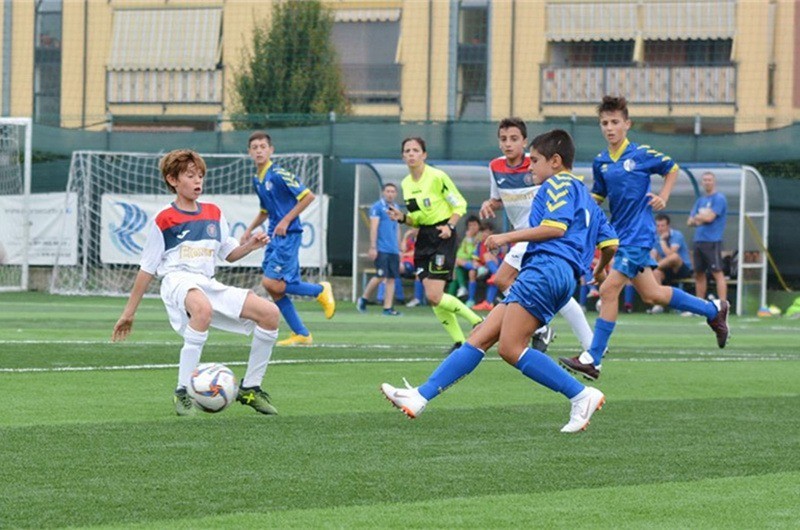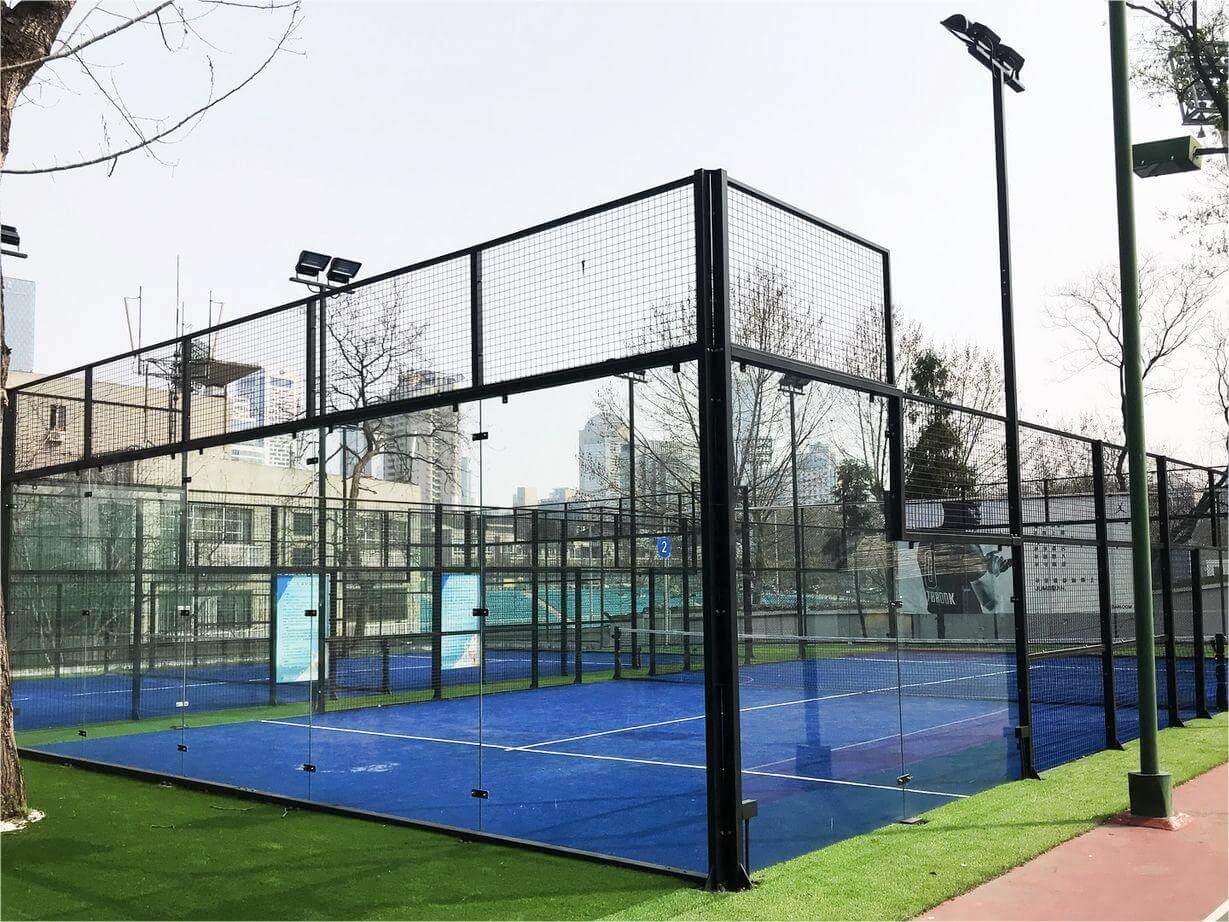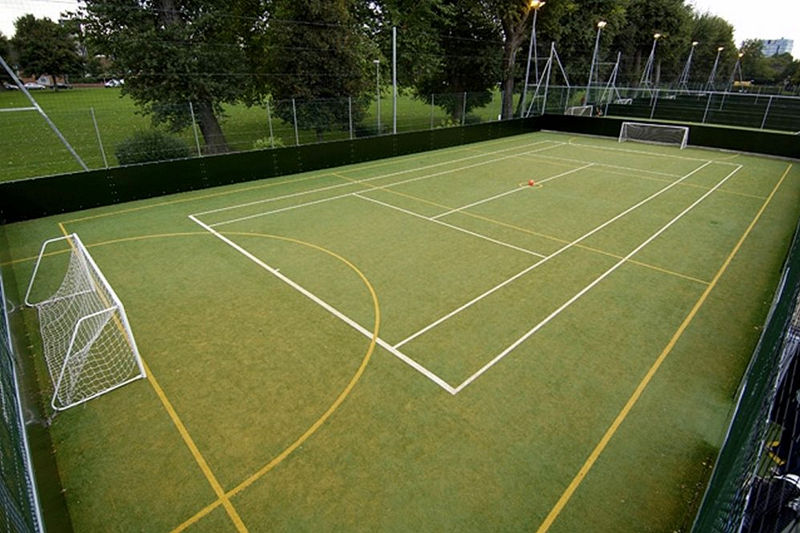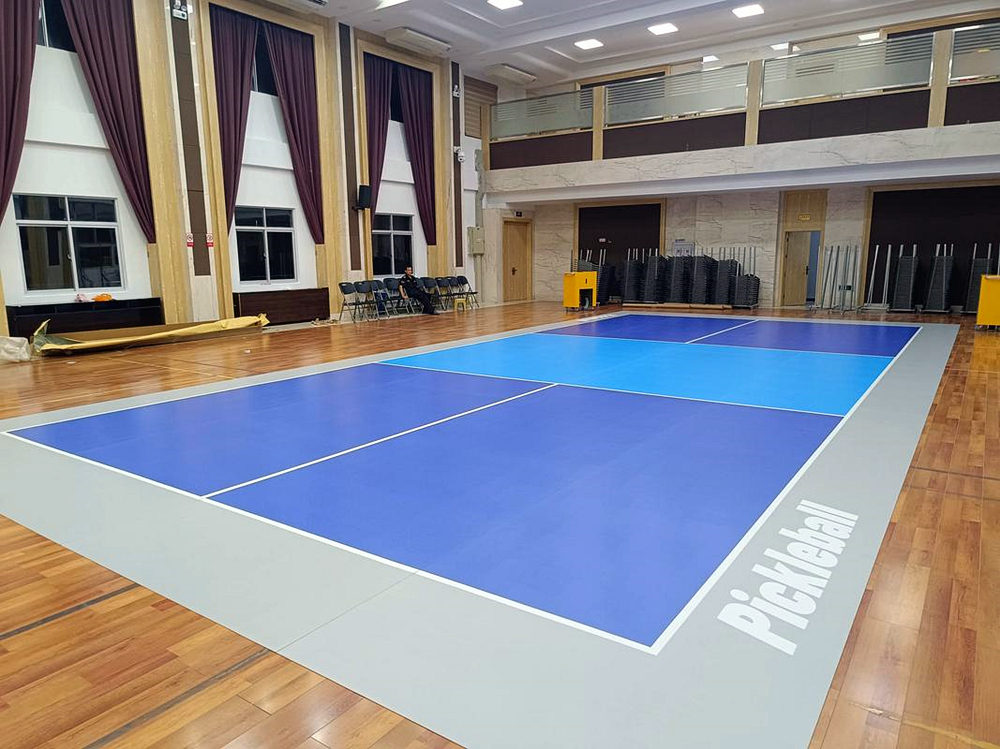Пиклбол — это не просто игра, это глобальное движение. Независимо от того, новичок ли вы, желающий изучить основы, или владелец заведения, планирующий построить площадку для пиклбола, понимание этого вида спорта имеет важное значение. В этой статье мы рассмотрим все, что вам нужно знать о пиклболе, включая его происхождение, развитие, правила, расположение площадки и варианты покрытия.
1. Что такое пиклбол?
Pickleball — это вид спорта с веслом, сочетающий в себе элементы тенниса, бадминтона и пинг-понга. В него играют с помощью цельной ракетки, перфорированного пластикового мяча (похожего на мяч для игры в виффл) и сетки, которая немного ниже теннисной сетки. Игроки могут соревноваться в одиночных или парных матчах.
Игра известна своим быстрым темпом, стратегическим геймплеем и подходит для всех возрастов и уровней подготовки — от детей до пожилых людей.
2. История и развитие пиклбола
Пиклбол был изобретен в 1965 на острове Бейнбридж, штат Вашингтон, США, тремя отцами — Джоэлом Притчардом, Биллом Беллом и Барни МакКаллумом — которые хотели развлечь своих детей. Имея ограниченное оборудование, они импровизировали игру с использованием ракеток и пластикового мяча на площадке для бадминтона.
Начав с скромного дворового пиклбола, он превратился в один из самых быстрорастущих видов спорта в мире, особенно в Северная Америка, Европа, и Азия. Он популярен в школах, общественных центрах, пенсионных сообществах и даже профессиональных лигах.
3. Основные правила игры в пиклбол
Вот основные правила игры:
Обслуживание: Подача снизу из-за задней линии. Подача должна приземлиться в противоположной диагонали корта.
Подсчет очков: Только подающая команда может набирать очки. Игры обычно играются до 11 (победа с разницей в 2).
Правило двойного отскока: Каждая сторона должна дать мячу отскочить один раз, прежде чем ударить по нему после подачи.
Зона без залпа: Также известно как «кухня», игроки не могут бить с лета (бить без отскока) ближе, чем на 7 футов от сетки.
Неисправности: Включая выбивание мяча за пределы поля, попадание в сетку или удар с лета на кухне.
4. Размеры площадки для пиклбола
Стандартная площадка для пиклбола:
Длина: 13,41 метра (44 фута)
Ширина: 6,10 метров (20 футов)
Чистая высота: 91,4 см (36 дюймов) по боковым линиям и 86,4 см (34 дюйма) в центре
Зона без залпа (кухня): 2,13 метра (7 футов) от сетки с каждой стороны
Для одиночных и парных игр используется один и тот же размер корта. Корты могут быть в помещении или на открытом воздухе, в зависимости от поверхности и местоположения.
5. Варианты покрытия для площадок для пиклбола
Выбор правильной поверхности имеет важное значение для производительности, безопасности и долговечности. Распространенные типы поверхностей включают:
Акриловые покрытия: Часто используется на бетоне или асфальте. Хорошо подходит для отскока мяча, но может изнашиваться со временем.
Модульная плитка: Пластиковые замковые полы, идеально подходящие для самостоятельной и быстрой установки.
ПВХ-покрытие: Нравиться Напольное покрытие для пиклбола NanoGrip™ от Arturf, разработанный для нескользящей, долговечной игры с сильным отскоком и устойчивостью к погодным условиям.
Для объектов, которым требуется универсальность и низкие эксплуатационные расходы, высококачественные полы из ПВХ-плитки «пиклбол» являются отличным вариантом как для внутреннего, так и для наружного использования.
6. Почему пиклбол так популярен?
Легко выучить: Простые правила делают игру доступной для новичков.
Низкое воздействие: Меньшая нагрузка на суставы по сравнению с теннисом.
Социальный спорт: Отлично подходит для семей, пожилых людей и сообществ.
Доступный: Требуется минимальное оборудование и пространство.
Вывод
Пиклбол — это больше, чем просто тренд, это вид спорта, который продолжает расти во всех поколениях и регионах. Поскольку все больше клубов, школ и спортивных центров открывают площадки для пиклбола, потребность в профессиональном, безопасном и высокопроизводительном напольном покрытии становится все более острой.
В Arturf, мы поддерживаем этот захватывающий вид спорта с помощью профессионального уровня Напольное покрытие Pickleball разработаны для удовлетворения конкретных потребностей игры. Независимо от того, строите ли вы новый корт или модернизируете существующий, наши решения долговечны, нескользящие и предназначены для игры на высшем уровне.




